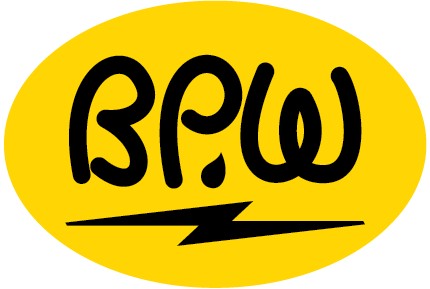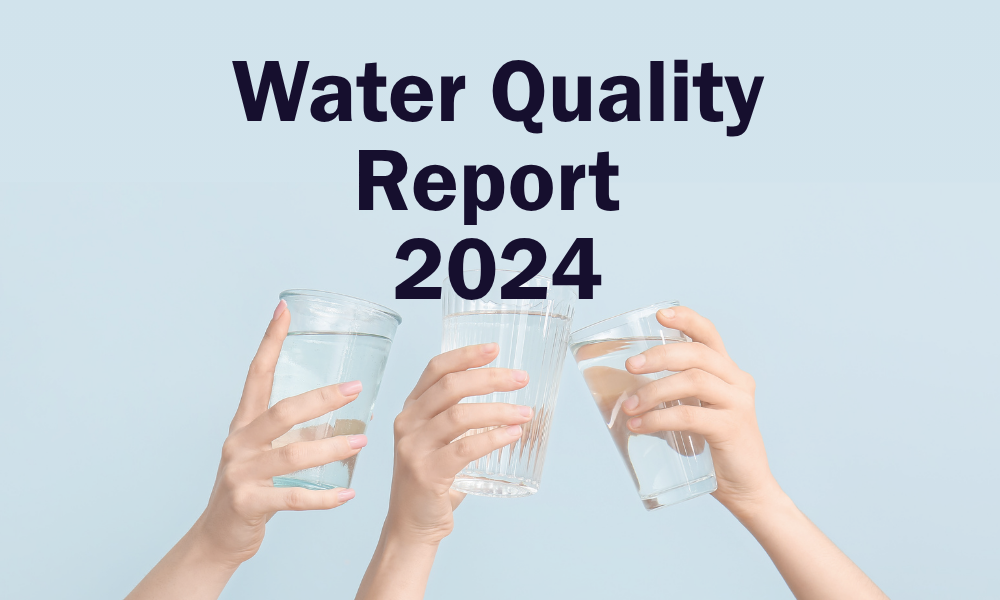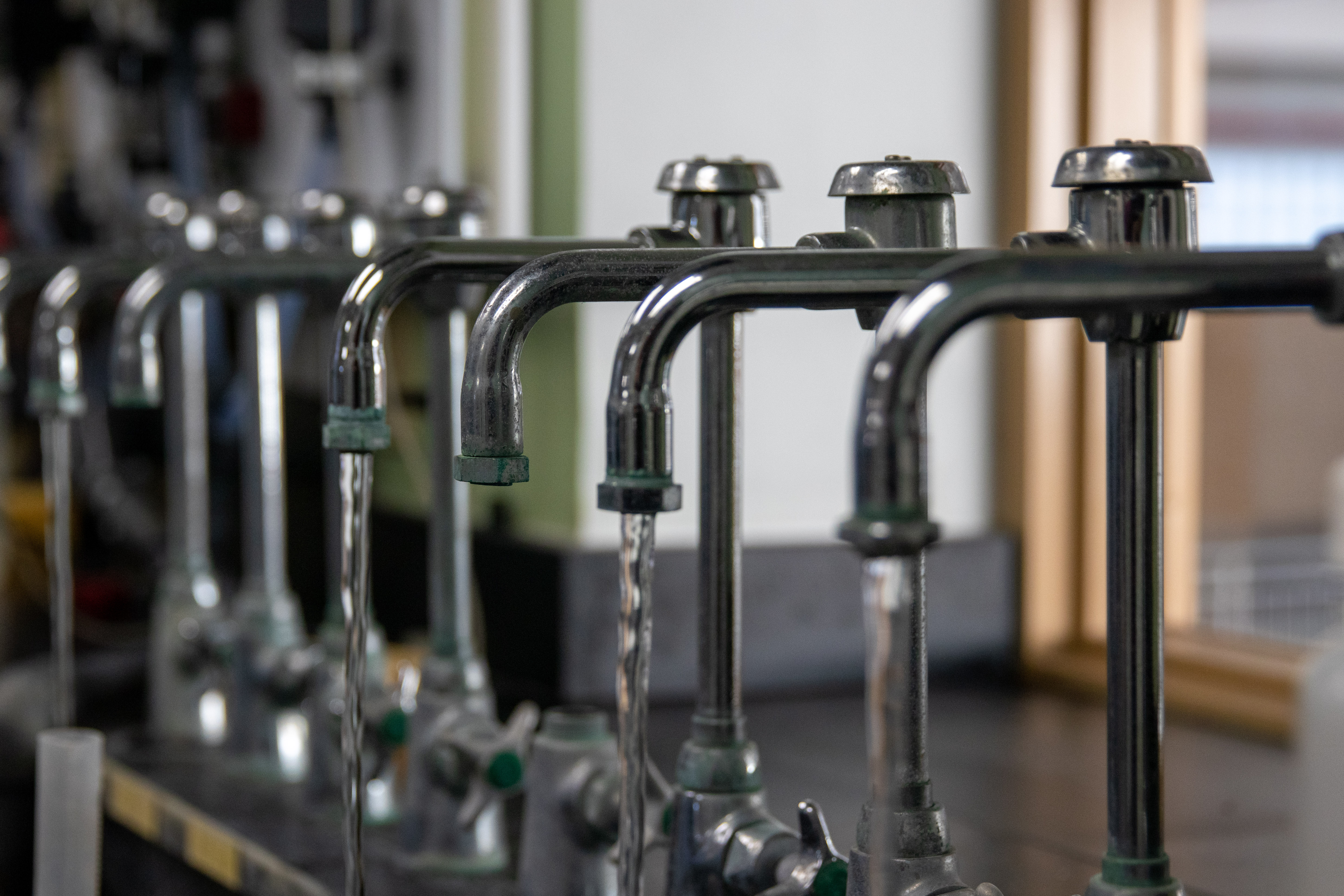Quick Links
A Letter from the Superintendent
Dear Neighbor,
At the Holland BPW Water Treatment Plant, we provide clean, safe, and high-quality drinking water to our community by treating and filtering water sourced from Lake Michigan. Our team of skilled professionals works tirelessly to ensure water quality excellence while responsibly managing our precious water resources.
We are proud to share that in 2024, our Water Treatment Plant once again exceeded all federal and state drinking water standards. With commitment to rigorous testing, our state-certified laboratory and independent third-party laboratories conducted over 60,000 tests last year. These efforts confirm the superior quality of water delivered to our customers.
This report outlines the quality of drinking water supplied in the 2024 calendar year. It offers insights into the origin and composition of your water, comparing it to standards set by the U.S. Environmental Protection Agency (EPA) and the Michigan Department of Environment, Great Lakes, and Energy (EGLE). You'll also find information on how you can contribute to water conservation and protect Lake Michigan, our vital water source.
We conduct regular testing to meet and exceed safety regulations mandated by EGLE and the EPA and have adopted goals for water quality that surpass these state and federal regulations. While this report includes data on detected contaminants, many other potential contaminants were analyzed for and not detected. This report is updated annually, and we are committed to keeping you informed of any issues should they arise.
Thank you for taking the time to learn about your water supply and for partnering with us to safeguard this invaluable resource.
Sincerely,
Nathan Johnson
Water Treatment Plant Superintendent
Learn More
This report is available at hollandbpw.com/water-quality-report and printed copies are also available at our Service Center, 625 Hastings Ave. We invite public participation in decisions that affect drinking water quality.
Your comments and participation are welcome at our public board meetings. Email publiccomment@hollandbpw.com or attend in person at the Holland BPW Service Center, 625 Hastings Ave. Meetings are typically held on the Monday between the first and second Wednesday of each month at 4:00pm.
- We recommend that you call to confirm the meeting time, date and location prior to arriving, or visit our website at hollandbpw.com for details about the meetings.
- For more information about your water or the contents of this report, please contact Holland Water Treatment Plant at (616) 355-1589.
- For more information about safe drinking water from EGLE,
- visit michigan.gov/egle/about/organization/drinking-water-and-environmental-health/drinking-water.
- For more in formation about safe drinking water from the US EPA, visit epa.gov/safewater.
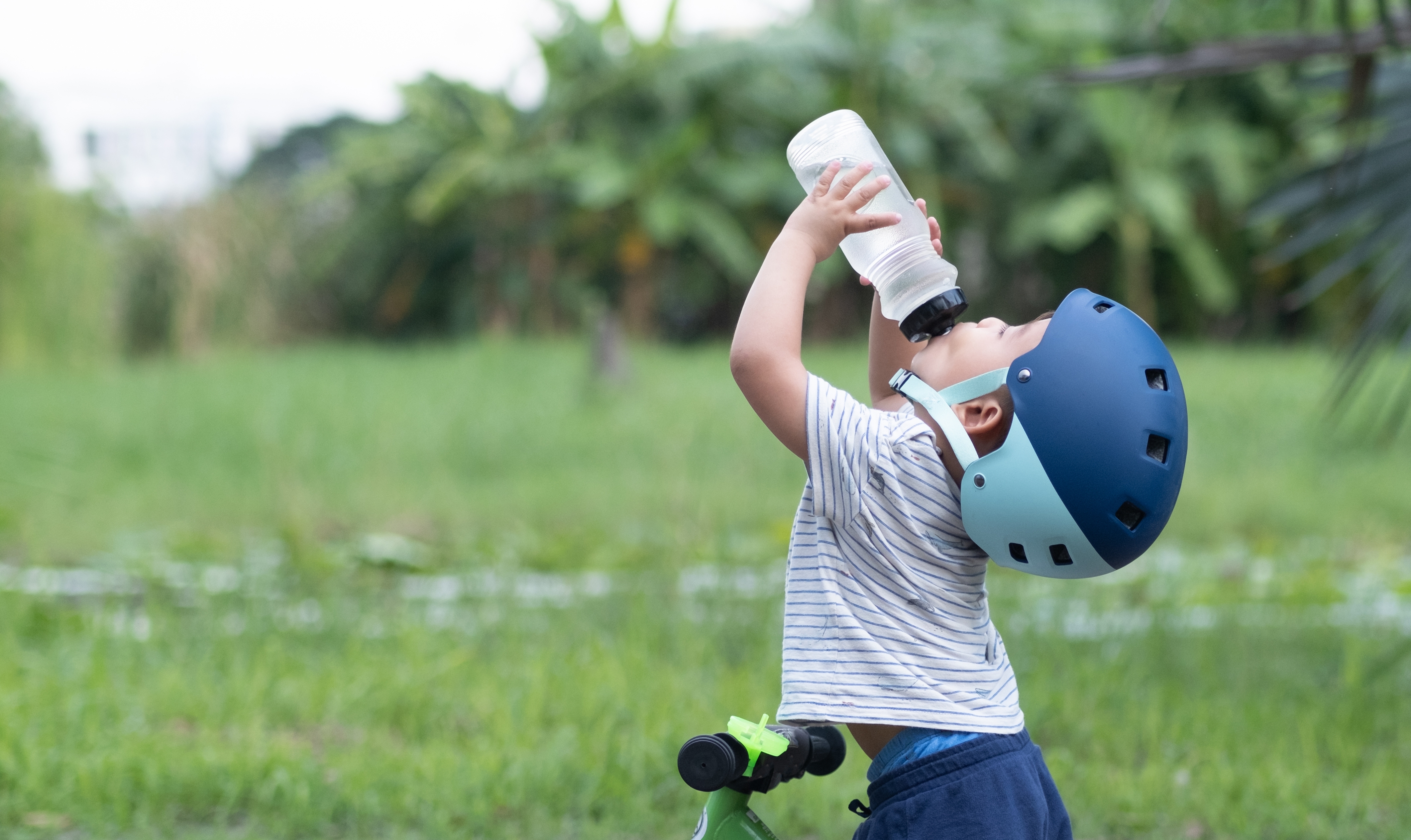

Get to Know Your Water Source
Your Health
Some people may be more vulnerable to contaminants in drinking water than others. People with weakened immune systems have a higher risk of infection, including but not limited to the following groups:
-
People receiving chemotherapy
-
Organ transplant recipients
-
People with HIV/AIDS or other immune systems disorders
-
Some elderly individuals
-
Infants
These groups should seek advice from their health care providers about drinking water. U.S. EPA and the Center for Disease Control also have guidelines to lessen your risk of infection by microbial contaminants.
Contaminants
Drinking water, including bottled water, may contain at least small amounts of some contaminants. The presence of contaminants does not necessarily mean that water poses a health risk.
You can get more information about contaminants and potential health effects by calling the U.S. EPA’s Safe Drinking Water hotline (800-426-4791) or visiting epa.gov/safewater.
Source Water Protections
In 2003, the State of Michigan performed an assessment on our source water. This assessment looked at Lake Michigan’s susceptibility or the relative potential of contamination. The susceptibility rating is given on a scale from “very-low” to “very-high,” with seven possible ratings. Ratings are based on geologic sensitivity, water chemistry and contamination sources. The State rated the Holland BPW’s water intake as “moderately sensitive.” It rated the water source itself as having a “moderately high” susceptibility to contamination.
The State identified 364 potential sources of contamination in the 175 square miles of watershed that could impact our water source. Their report further states, “Historically, the Holland Board of Public Works Water Treatment Plant has effectively treated this water source to meet drinking water standards. There have been no detections of synthetic or volatile organic contaminants in the system’s raw water.” You can get a copy of Holland BPW’s full Source Water Assessment by calling 616.355.1500.
To continue these efforts, Holland BPW has an award-winning Surface Water Intake Protection Plan (SWIPP) in place. The EPA and EGLE encourage this voluntary effort that outlines community-wide actions and efforts to protect drinking water sources. For more information about Holland BPW’s SWIPP, please call the Water Treatment Plant at 616.355.1589.
Sources of Drinking Water
Drinking water (both from the tap and bottled water) can come from rivers, lakes, streams, ponds, reservoirs, springs or wells. Holland BPW’s drinking water comes from Lake Michigan.
As water travels across land or underground, it dissolves naturally-occurring minerals and sometimes radioactive material. Water can also pick up contaminants that come from animal or human activity.
Contaminants that may be present in source water include:
-
Microbial contaminants, such as viruses and bacteria. These contaminants may come from wastewater treatment plants, septic systems, agricultural livestock operations and wildlife.
-
Inorganic contaminants, such as salts and metals. Some of these occur naturally. Salts and metals can also come from urban storm water runoff, industrial or domestic wastewater, oil and gas production, mining or farming.
-
Pesticides and herbicides. These may come from a variety of sources including agriculture and residential uses.
-
Radioactive contaminants. These can be naturally-occurring or the result of oil and gas production and mining activities.
-
Organic chemical contaminants. These include synthetic and volatile organic chemicals, which are by-products of industrial processes and petroleum production. Organic chemical contaminants can also come from gas stations, urban storm water runoff and septic systems.
To ensure that tap water is safe to drink, the U.S. EPA limits the levels of certain contaminants in public water systems. Similarly, Federal Food and Drug Administration regulations limit contaminants in bottled water to protect public health.
Lead & Copper
Pipes can be made of a variety of materials such as iron or plastic. In the past, some may have been made from galvanized metals or lead. Holland BPW completed an inventory of water service lines in 2024. This inventory did not identify any service lines made completely out of lead pipe. This inventory was based on information provided in construction records and plumbing inspections required when service lines were installed or replaced and was verified through visual inspection of a statistically significant number of randomly selected service lines. The inventory is updated any time new records and inspections are obtained.
Most metals disintegrate as they corrode. However, corroding galvanized pipes pick up deposits that the water carries from other pipes in the system. Because these galvanized pipes were once connected to lead goosenecks, lead deposits may have built up inside the galvanized pipe.
A gooseneck is a short piece of flexible pipe that connects the service line pipe to the water main pipe. In the past, lead was used to make goosenecks because it was durable and flexible. Modern goosenecks are made of flexible piping materials such as copper and plastic.
For this reason, Holland BPW has a program in place to replace all remaining galvanized lines in the system by the end of 2038. This time frame aligns with State of Michigan regulations and Holland BPW’s asset management plan. This replacement program includes:
- The public section of the galvanized service lines from the water main to the property line.
- The private section between the property line and the home, which is usually the responsibility of the homeowner.
Any galvanized piping inside the home is still the responsibility of the homeowner to replace as desired.
Lead
Lead can cause serious health effects in people of all ages, especially pregnant people, infants (both formula-fed and breastfed), and young children. Lead in drinking water is primarily from materials and parts used in service lines and in home plumbing. Holland Board of Public Works is responsible for providing high quality drinking water and removing lead pipes but cannot control the variety of materials used in the plumbing in your home. Because lead levels may vary over time, lead exposure is possible even when your tap sampling results do not detect lead at one point in time.
You can help protect yourself and your family by identifying and removing lead materials within your home plumbing and taking steps to reduce your family’s risk. Using a filter, certified by an American National Standards Institute accredited certifier to reduce lead, is effective in reducing lead exposures. Follow the instructions provided with the filter to ensure the filter is used properly.
Use only cold water for drinking, cooking, and making baby formula. Boiling water does not remove lead from water. Before using tap water for drinking, cooking, or making baby formula, flush your pipes for several minutes. You can do this by running your tap, taking a shower, doing laundry or a load of dishes. If you have a lead service line or galvanized requiring replacement service line, you may need to flush your pipes for at least 5 minutes to flush water from both your home plumbing and the lead service line.
If you are concerned about lead in your water and wish to have your water tested, contact Holland Board of Public Works, Water and Wastewater Service Department, at
(616) 355 – 1643 for available resources. Information on lead in drinking water, testing methods, and steps you can take to minimize exposure is available at https://www.epa.gov/safewater/lead.
Copper
Copper is an essential nutrient. However, drinking water with copper levels higher than the action level in a short amount of time could cause gastrointestinal distress. Some people who drink water with copper levels higher than the action level over many years could suffer liver or kidney damage. People with Wilson’s Disease or other conditions that limit the body’s ability to remove excess copper should talk to their health care provider.
Quantity of Service Types in 2024
Service Description | |
|---|---|
Copper, Plastic, and Other Non-Lead | 14,226 |
Lead Service: Lead Pipe | 0 |
Lead Service: Galvanized Pipe with Lead Gooseneck | 1,728 |
Lead Service: Galvanized Pipe Previously Connected to Lead Gooseneck | 1,468 |
Unknown Material | 202 |
Total | 17,624 |
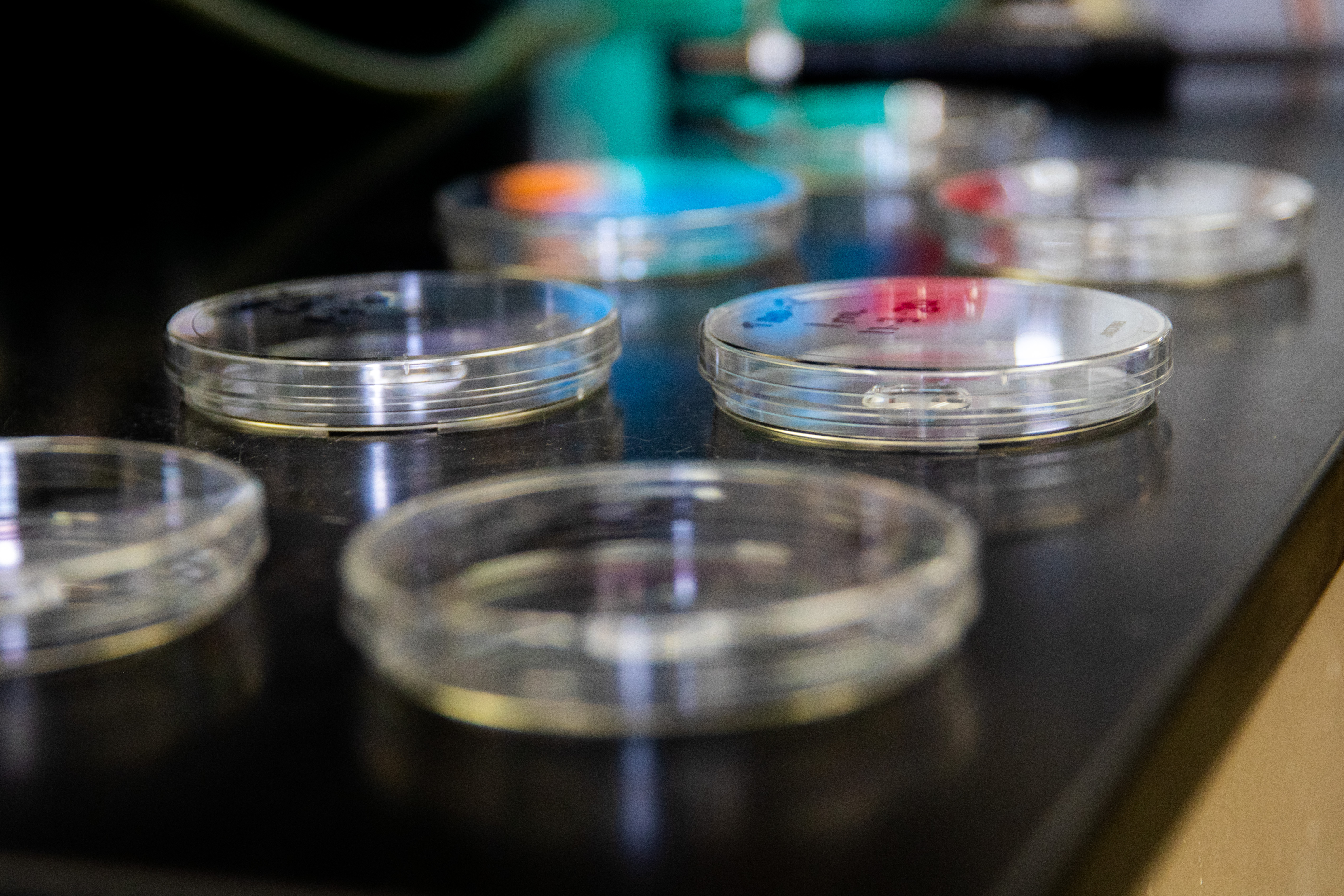
PFAS
Per- and polyfluoroalkyl substances (PFAS), sometimes called PFCs, are a group of chemicals that are resistant to heat, water, and oil. The U.S. EPA has named PFAS as an emerging contaminant. For decades, PFAS have been used in industrial applications and consumer products and are still used today. Products with PFAS include carpeting, waterproof clothing, upholstery, food paper wrappings, fire-fighting foams, and metal plating. PFAS have also been found at low levels in both the environment and blood samples from the general U.S. population.
These chemicals are persistent, which means they do not break down in the environment. PFAS chemicals also bioaccumulate, meaning the amount of the chemical in a person’s body builds up over time in their blood and organs.
Why was Holland BPW’s Source Water Tested for PFAS?
Holland BPW follows the EGLE standard compliance monitoring schedule for PFAS Maximum Contaminant Levels (MCLs). In 2020, EGLE developed MCLs for seven PFAS compounds in Michigan. Even before EGLE developed PFAS MCLs, Holland BPW participated in EGLE-coordinated voluntary sampling in 2019. With health and safety at the core of our values, we saw this initiative as a chance to learn about our source water.
How Can PFAS Affect People’s Health?
Although our understanding of these emerging contaminants constantly changes, higher levels of PFAS have the potential to cause negative health effects. These include increased cholesterol, changes in hormones and the immune system, decreased fertility, and increased risk of some cancers. Epidemiological and laboratory studies in animal models support these links to health effects in humans.
If you are concerned about exposure to PFAS in your drinking water, please contact
Michigan Department of Health and Human Services Toxicology hotline at 800-648-6942
Center for Disease Control and Prevention/ATSDR at www.cdc.gov/cdc-info or 800-232-4636.
Scientists are still learning about the health effects of exposure to PFAS, including exposure to mixtures.
What Other Ways Could I Be Exposed to PFOA, PFOS and Other PFAS Compounds?
PFAS are used in many consumer products, including:
Food packaging such as fast-food wrappers and microwave popcorn bags
Waterproof and stain-resistant fabrics such as outdoor clothing, upholstery, and carpeting
Nonstick coatings on cookware
Cleaning supplies including some soaps and shampoos.
Exposure to PFAS can come from house dust, indoor and outdoor air, food, and drinking water. More research is needed to understand how people can be exposed to PFAS.
Who Can I Call if I Have Questions about PFAS in my Drinking Water?
If any resident has additional questions regarding this issue, the State of Michigan Environmental Assistance Center can be contacted at 800-662-9278.
Where can I Learn More about PFAS?
For information on PFOA, PFOS, and other PFAS, including possible health outcomes, you may visit these websites:
Terms & Abbreviations
90 percent of the samples taken were below the number listed.
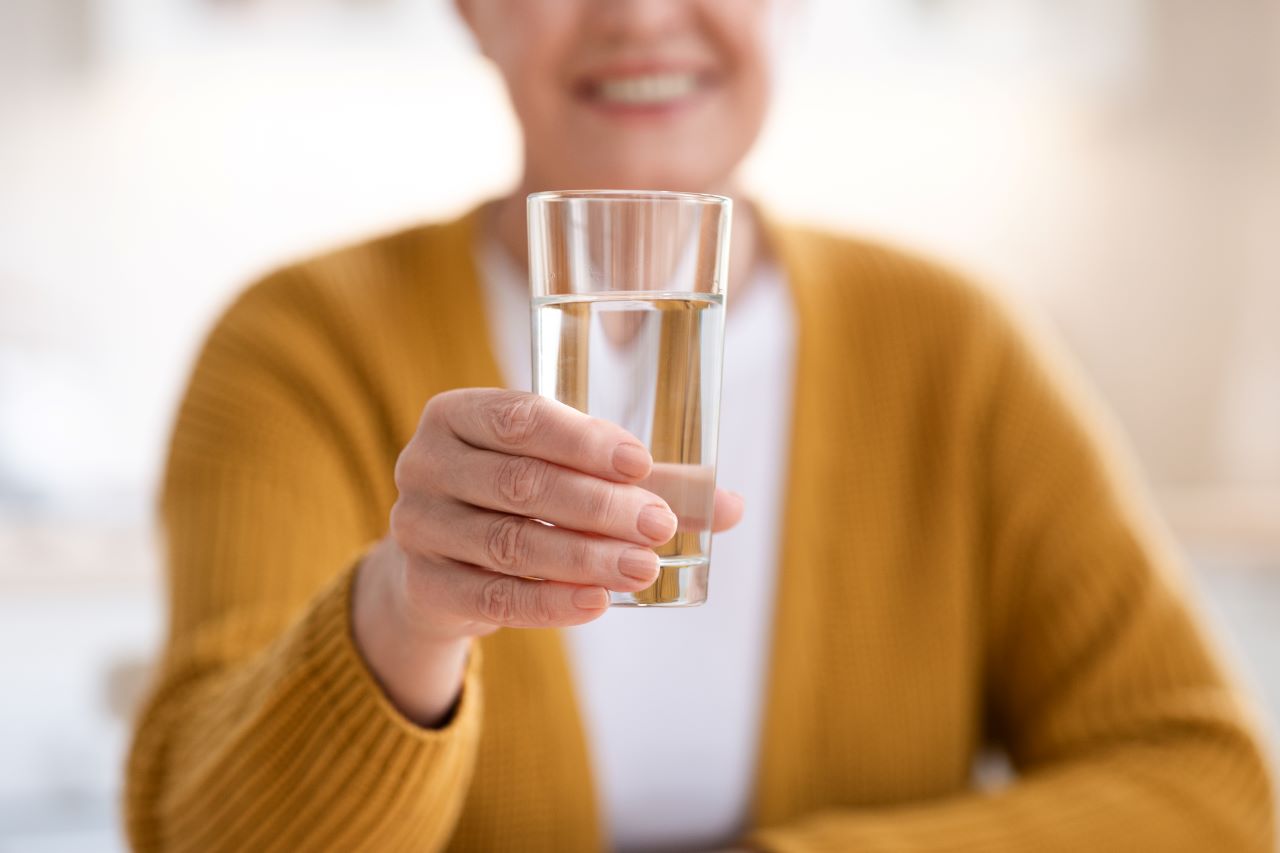
Water Quality Data
The tables below list all the drinking water contaminants that we detected during the 2024 calendar year. The presence of these contaminants in the water does not necessarily indicate that the water poses a health risk. The data presented in this table is from testing done January 1 - December 31, 2024.
Holland Water Treatment Plant Data for 2024 (WSSN 3190)
Regulated at the Water Treatment Plant
Substance (units) | EPA's MCL, TT | EPA's MCLG | Highest Level Detected | Violations | Range of Detection | Typical Source of Contaminant |
|---|---|---|---|---|---|---|
Fluoride (ppm) | 4.00 | 4.00 | 0.72 | None | 0.63 - 0.72 | Erosion of natural deposits; Water additive which promotes strong teeth; Discharge from fertilizer and aluminum factories |
Nitrate (ppm) | 10 | 10 | 0.492 | None | 0.347 - 0.492 | Runoff from fertilizer use; Leaching from septic tanks, sewage; Erosion of natural deposits |
Turbidity (NTU) | 1.0 | N/A | 0.094 | None | 0.018 - 0.094 | Cloudiness of water; Good indicator of the effectiveness of our filtration system |
PFOS (ppt) | EGLE MCL: 16 EPA MCL: 4.0 | 0 | 2.9 | None | 2.1 - 2.9 | Food packaging, waterproof fabric, non-stick coating, etc. |
PFAS (ppt) | EGLE MCL, EPA MCL, & EPA MCLG Vary | All other PFAS chemical results not listed in this report were less than the EGLE minimum reporting limit or not detected. |
Regulated at Customer's Tap - 2022 Results, Not Sampled 2024
Substance (units) | EPA's MCL, AL | EPA's MCLG | 90th Percentile Detected | Violations | Range of Detection | Typical Source of Contaminant |
|---|---|---|---|---|---|---|
Copper (ppm) - Distribution | 1.3 | 1.3 | 0.0 | None | 0.0 - 0.1 | Corrosion of household plumbing systems; Erosion of natural deposits |
Lead (ppb) - Distribution | 15 | 0 | 1 | None | 0 - 2 | Lead service line, corrosion of household plubming including fittings and fixtures; Erosion of natural deposits |
Regulated in Distribution System (WSSN 3190)
Substance (units) | EPA's MCL, AL | EPA's MCLG | Highest Level Detected | Highest Local Running Average | Violations | Range of Detection | Typical Source of Contaminant |
|---|---|---|---|---|---|---|---|
Chlorine [Cl2] (ppm) | 4.00 MRDL | 4.00 MRDLG | 1.53 | .82 | None | 0.00 - 1.53 | Water additive used to control microbes |
Total Trihalomethanes [TTHM] (ppb) | 80 | 0 | 64.1 | 57.8 | None | 31.0 - 64.1 | Byproduct of drinking water disinfection |
Haloacetic Acids [HAA5] (ppb) | 60 | 0 | 38.1 | 20.3 | None | 9.3 - 38.1 | Byproduct of drinking water disinfection |
Total Coliform Bacteria | <5% | 0 | 0 | N/A | None | 0 - 0 | Naturally present in the environment |
Unregulated Contaminants
Substance (units) | EPA's MCL, AL | EPA's MCLG | Highest Level Detected | Violations | Range of Detection | Typical Source of Contaminant |
|---|---|---|---|---|---|---|
Sodium (ppm) | N/A | N/A | 14.3 | None | 10.1 - 14.3 | Erosion of natural deposits |
NEtFOSAA (ppt) | N/A | N/A | 2.5 | None | < 2.0 - 2.5 | Food packaging, water proof fabric, etc. |
These are contaminates for which the EPA has not established drinking water standards. The purpose of the unregulated contaminates monitoring is to assist EPA in determining the occurrence of unregulated contaminates in drinking water. Holland BPW performed additional testing for other unregulated contaminants; no detections were found. Results of these tests are available by contacting the Water Treatment Plant at 616-355-1589.
Laketown Township
Distribution System (WSSN 3747)
Substance (units) | EPA's MCL, TT | EPA's MCLG | Highest Level Detected | Highest Local Running Average | Violations | Range of Detection | Typical Source of Contaminant |
|---|---|---|---|---|---|---|---|
Chlorine [Cl2] (ppm) | 4.00 MRDL | 4.00 MRDLG | 1.48 | 1.21 | None | 0.80 - 1.48 | Water additive used to control microbes |
Total Trihalomethanes [TTHM] (ppb) | 80 | 0 | 63.6 | 53.0 | None | 36.5 - 63.6 | Byproduct of drinking water disinfection |
Haloacetic Acids [HAA5] (ppb) | 60 | 0 | 36.0 | 20.3 | None | 10.4 - 36.0 | Byproduct of drinking water disinfection |
Total Coliform Bacteria | TT | 0 | 1 | N/A | None | 0 - 1 | Naturally present in the environment |
Regulated at Customer's Tap
Substance (units) | EPA's AL | EPA's MCLG | 90th Percentile Detected | Violations | Range of Detection | Typical Source of Contaminant |
|---|---|---|---|---|---|---|
Copper (ppm) | 1.3 | 1.3 | 0.0 | None | 0.0 - 0.1 | Corrosion of household plumbing systems; Erosion of natural deposits |
Lead (ppb) | 15 | 0 | 1 | None | 0 - 1 | Lead service line, corrosion of household plubming including fittings and fixtures; Erosion of natural deposits |
Park Township
Regulated in Distribution System (WSSN 5203)
Substance (units) | EPA's MCL, TT | EPA's MCLG | Highest Level Detected | Highest Local Running Average | Violations | Range of Detection | Typical Source of Contaminant |
|---|---|---|---|---|---|---|---|
Chlorine [Cl2] (ppm) | 4.00 MRDL | 4.00 MRDLG | 1.52 | 1.24 | None | 0.17 - 1.52 | Water additive used to control microbes |
Total Trihalomethanes [TTHM] (ppb) | 80 | 0 | 67.5 | 52.4 | None | 22.7 - 67.5 | Byproduct of drinking water disinfection |
Haloacetic Acids [HAA5] (ppb) | 60 | 0 | 38.0 | 20.6 | None | 8.8 - 38.0 | Byproduct of drinking water disinfection |
Total Coliform Bacteria | TT | 0 | 0 | N/A | None | 0 - 0 | Naturally present in the environment |
Regulated at Customer's Tap 2022 Results, Not Sampled 2024
Substance (units) | EPA's AL | EPA's MCLG | 90th Percentile Detected | Violations | Range of Detection | Typical Source of Contaminant |
|---|---|---|---|---|---|---|
Copper (ppm) | 1.3 | 1.3 | 0.0 | None | 0.0 - 0.1 | Corrosion of household plumbing systems; Erosion of natural deposits |
Lead (ppb) | 15 | 0 | 0 | None | 0 - 5 | Lead service line, corrosion of household plubming including fittings and fixtures; Erosion of natural deposits |
Unregulated Contaminants
The 1996 Safe Drinking Water Act (SDWA) amendments require that once every five years the EPA must issue a new list of no more than 30 unregulated contaminants to be monitored by public water systems.
The fourth Unregulated Contaminant Monitoring Rule (UCMR 4) was published in the Federal Register on December 20, 2016. UCMR 4 required monitoring for 30 chemical contaminants between 2018 and 2020 using analytical methods developed by EPA and consensus organizations. This monitoring provides a basis for future regulatory actions to protect public health.
For more information about UCMR4 visit epa.gov/dwucmr/fourth-unregulated-contaminant-monitoring-rule.
Contaminant (ppb) | Min | Max | Average |
|---|---|---|---|
HAA5 | 34.30 | 37.00 | 35.65 |
HAA6Br | 13.40 | 13.90 | 13.65 |
HAA9 | 46.80 | 49.90 | 48.33 |
Chlorodibromoacetic | 1.20 | 1.20 | 1.20 |
Dibromoacetic Acid | 0.66 | 0.67 | 0.67 |
Dichloracetic Acid | 14.70 | 15.50 | 15.10 |
Trichloroactic | 18.90 | 20.50 | 19.70 |
Bromochloroacetic Acid | 4.60 | 4.60 | 4.60 |
Bromodichloroacetic Acid | 6.90 | 7.30 | 7.15 |
Manganese | 0.26 | 0.26 | 0.26 |
Total Organic Carbon (TOC) | 600 | 600 | 600 |
The fifth Unregulated Contaminant Monitoring Rule (UCMR 5) was published in the Federal Register on December 27, 2021 and applies to results collected between 2023 and 2025. We are actively monitoring the unregulated contaminants required by UCMR 5 and have found no results that measured at or above the minimum reporting level.
For more information about UCMR5 visit epa.gov/dwucmr/fifth-unregulated-contaminant-monitoring-rule.
Water Conservation
Lake Michigan is a precious resource. We share this great resource with plants, animals, fish, and each other. Just as we share in the benefits of this Great Lake, we share in the responsibility of protecting and conserving our water source.
Protecting Our Water Resources
The greatest increase that our water utility sees in demand is the result of lawn irrigation in the summer months. Grass lawns often have shallow roots and need greater amounts of water to keep them from going brown and dormant in the hot summer. One of the best ways to save water and money on your utility bill is to reduce your summer lawn sprinkling.
Holland BPW has worked to reap the benefits of converting traditional lawns to native landscapes at three of our main facilities: the Service Center, Holland Energy Park, and the Water Treatment Plant.
Holland Energy Park has about 11 acres of sustainable landscaping. Outdoor Discovery Center (ODC) Network maintains this acreage, pulling invasive species where necessary and overplanting to keep the landscaping maintained. ODC Network has installed several rain gardens and native landscape beds around the property along with deep-rooted native plants. Native plants can include swamp milkweed, blazing star, purple coneflower, butterfly milkweed, and more.
The Water Treatment Plant has 5 acres of dry native prairie plantings, similar to those at Holland Energy Park. The mix of plants includes deep-rooted species that were purposely chosen to withstand dry conditions without the need for watering while beautifying the landscape with a variety of blooms to last the entire growing season.
The Service Center on Hastings Ave has a 1.5- acre lawn-to-native prairie conversion. This year, we will add another 2.5-acre meadow near the retention pond as well.
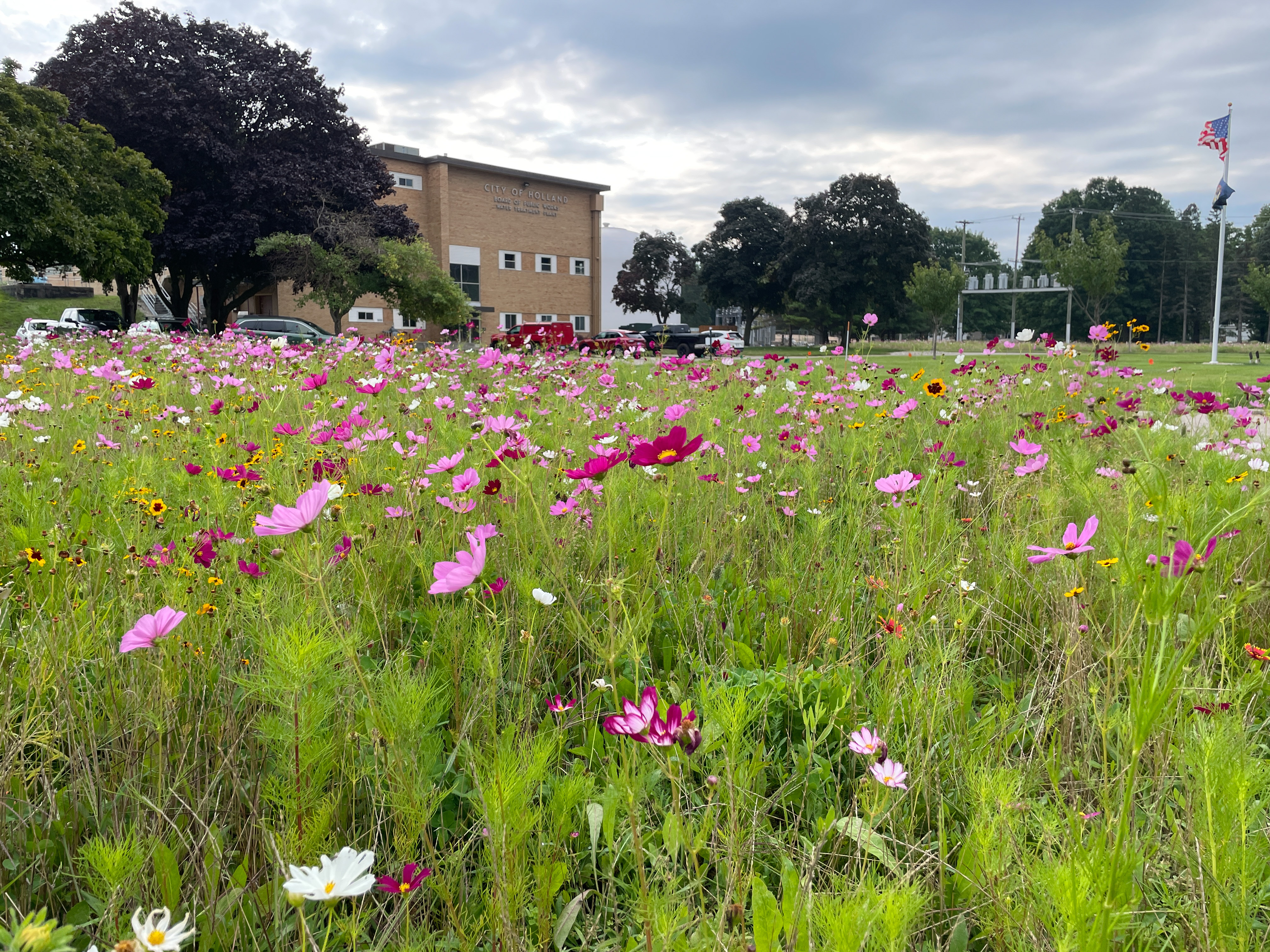
Heatwave Sprinkling Holdoff
Do your part to conserve water when it matters most.
Holland BPW will ask customers to skip irrigating their lawn on designated summer days to conserve water and prevent an increase in water rates.
Notifications will be sent 1-3 days in advance.
- Watch for announcements for Heatwave Sprinkling Holdoff days on social media.
- Watch for Heatwave Sprinkling Holdoff emails from Holland BPW.
- Sign up to receive text notifications. We will send you a text asking you to not water your lawn during the designated days

